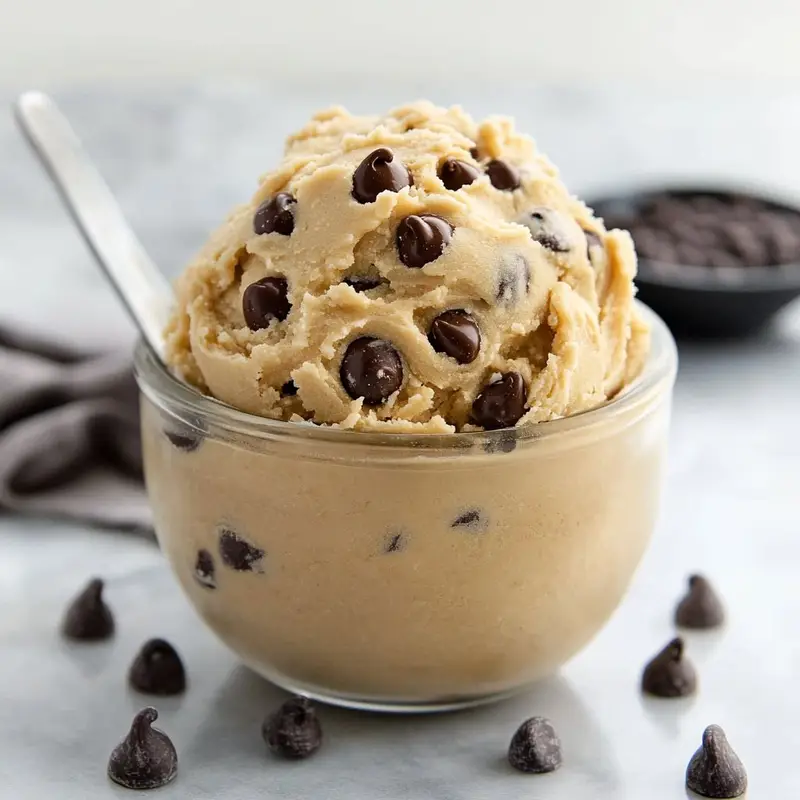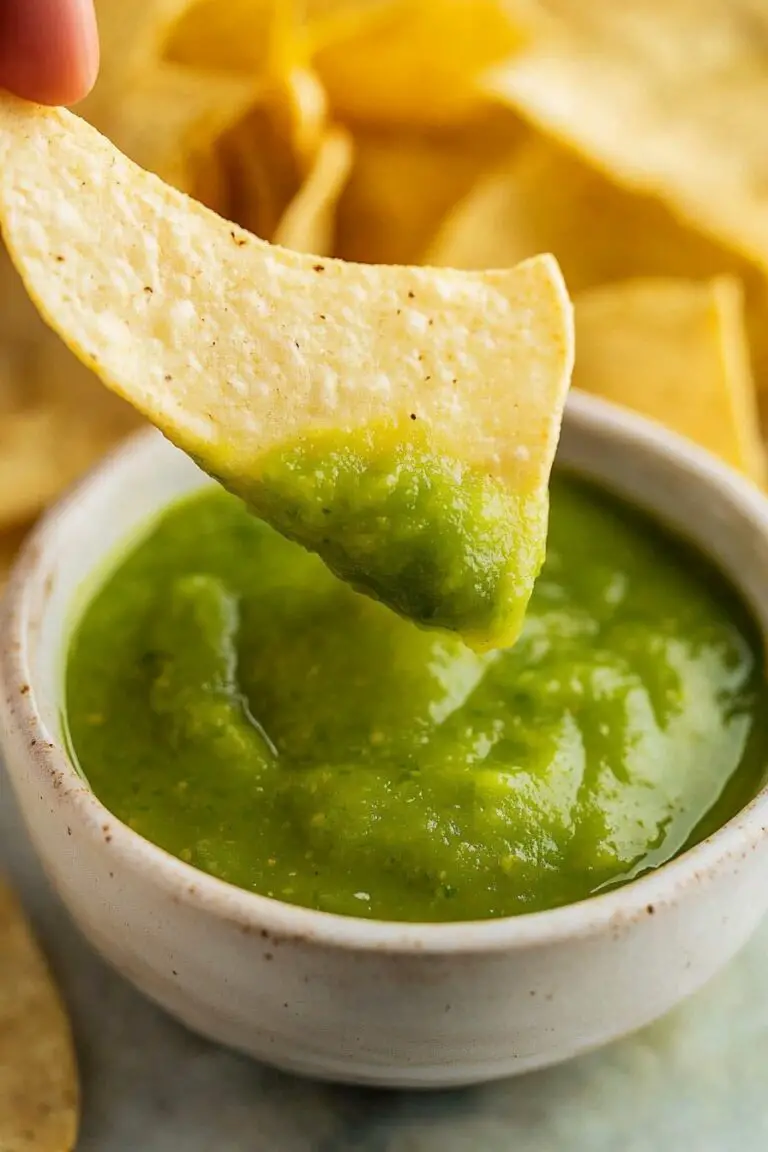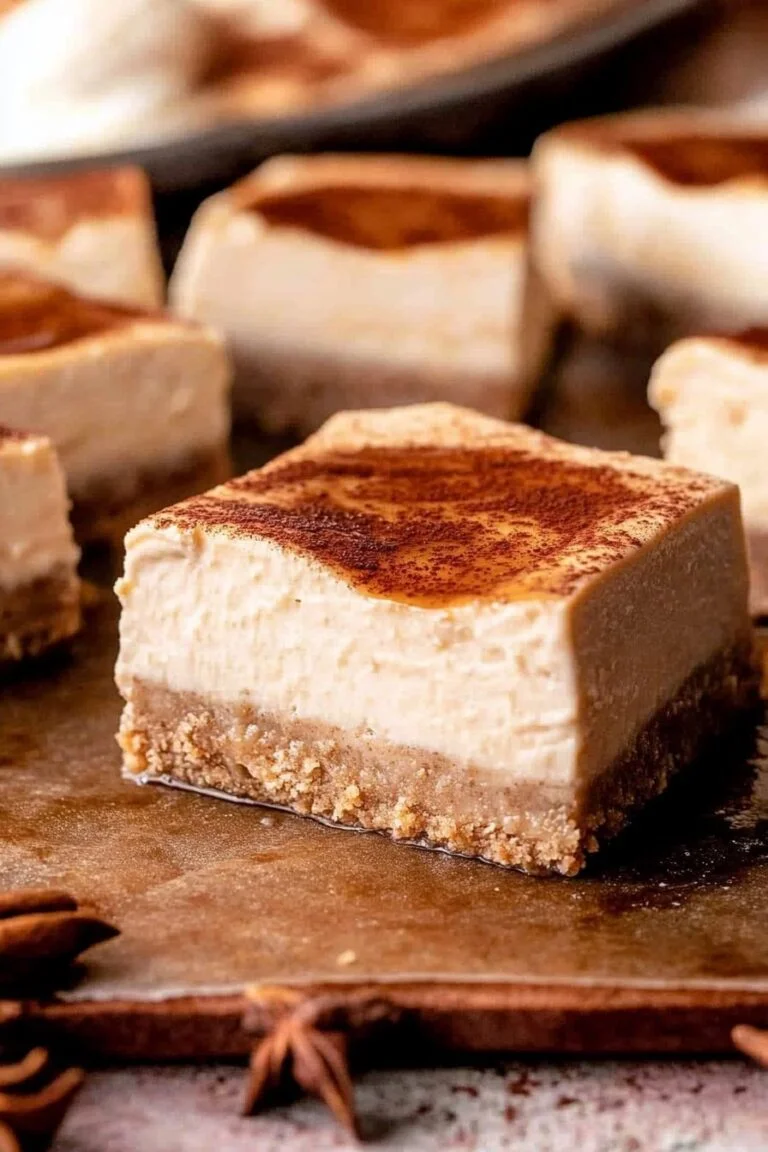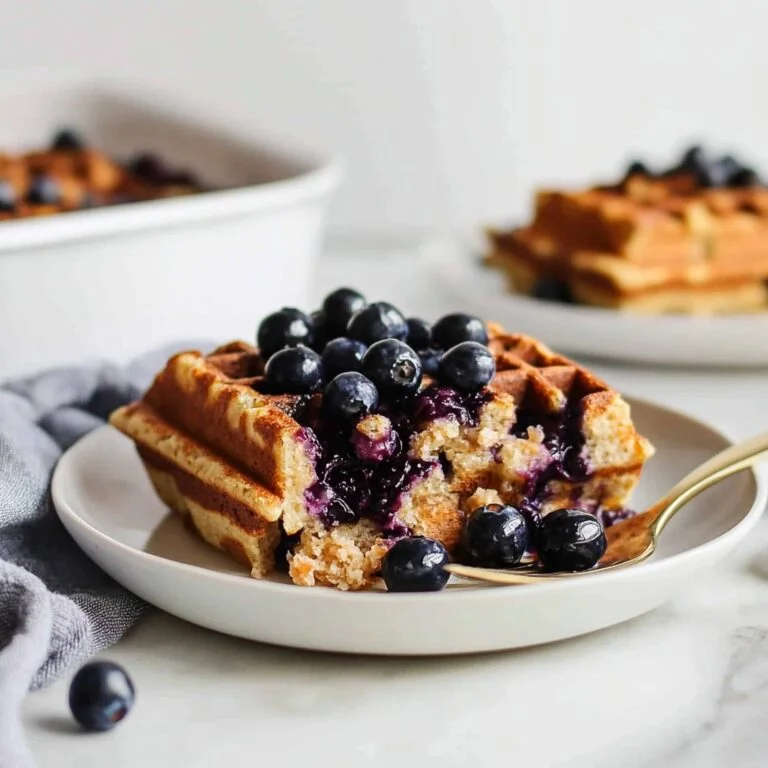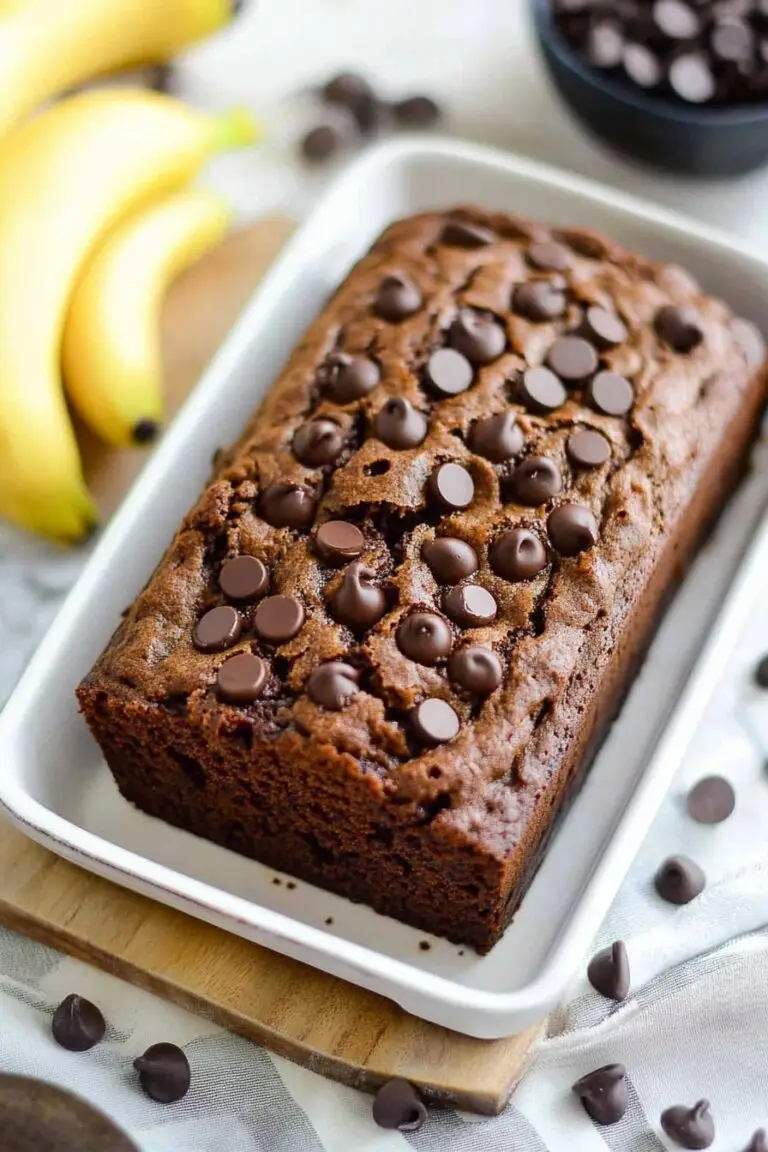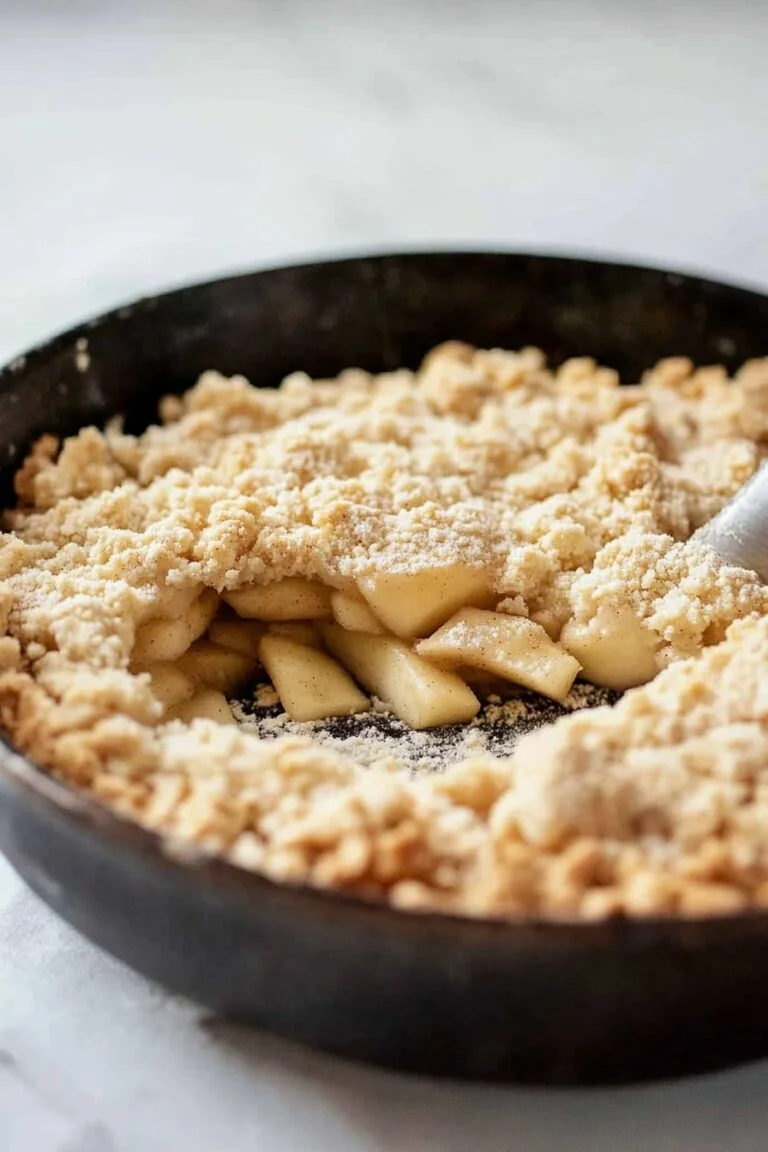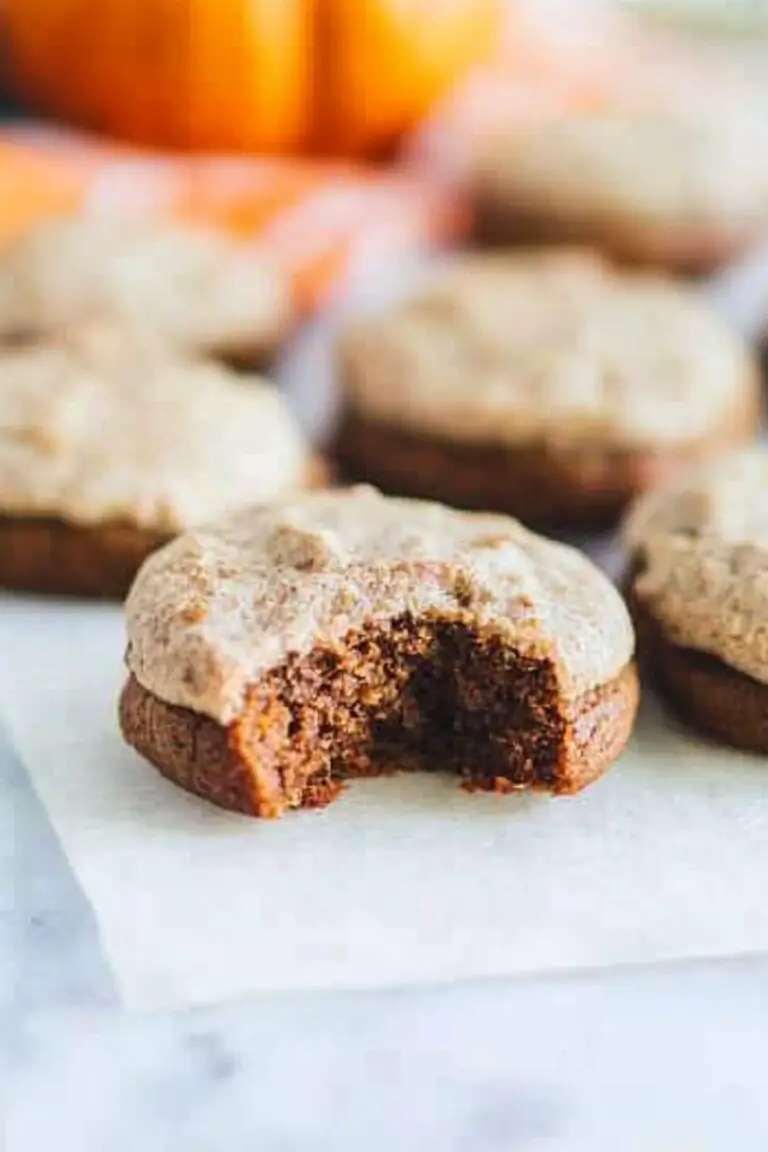Edible Cookie Dough Recipe: Delicious and Safe to Eat
Edible cookie dough has become a favorite for many who love the taste of cookie batter but want to indulge without the risks associated with raw eggs and untreated flour. Traditionally, cookie dough was made with raw eggs, which presented the risk of salmonella, and untreated flour, which could harbor E. coli. Modern recipes have devised ways to make cookie dough safe to eat raw, making it an irresistible treat for all ages. In this article, we'll explore a foolproof recipe for edible cookie dough that is both safe and delicious.
The origins of edible cookie dough can be traced back to the raw food movement, which emphasized eating foods in their most natural state. However, the widespread availability of pasteurized eggs and heat-treated flour has made it possible to enjoy this treat without any health worries. If you're interested in learning more about safe food practices, check out this resource from the FDA. This edible cookie dough recipe can be customized with your favorite mix-ins, such as chocolate chips, nuts, or even sprinkles, making it a versatile dessert option.
Ingredients for Edible Cookie Dough Recipe
- 1 cup all-purpose flour (heat-treated)
- 1/2 cup unsalted butter, softened
- 1/3 cup granulated sugar
- 1/3 cup brown sugar, packed
- 1/4 teaspoon salt
- 1 teaspoon vanilla extract
- 2 tablespoons milk
- 1/2 cup chocolate chips
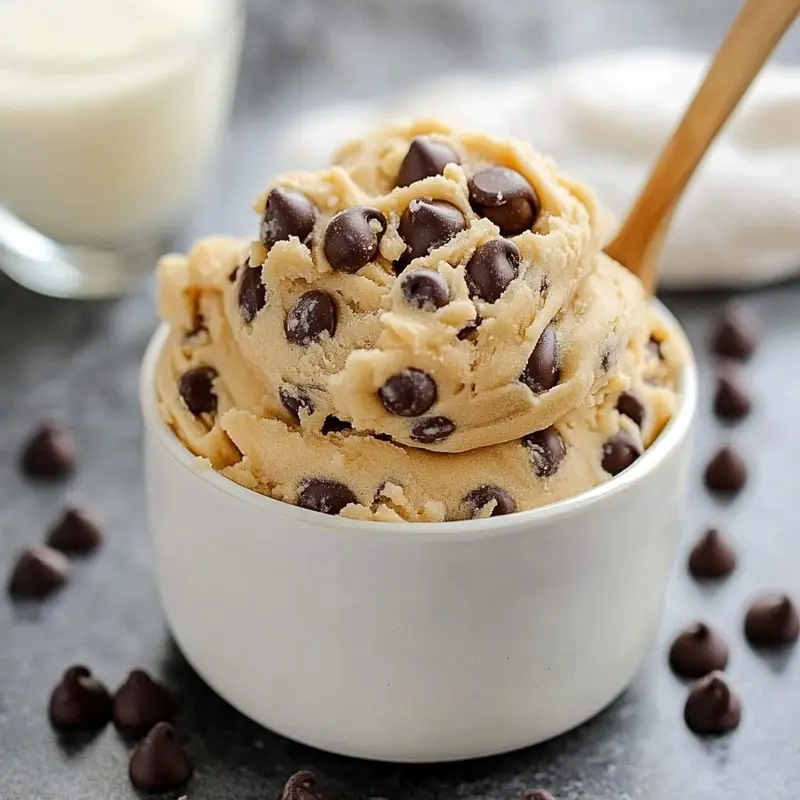
Instructions for Making Edible Cookie Dough Recipe
- Spread the flour on a baking sheet and bake at 350°F (175°C) for 5 minutes to kill any potential bacteria.
- In a large bowl, cream together the softened butter, granulated sugar, and brown sugar until smooth.
- Add the salt, vanilla extract, and milk to the butter mixture and continue to mix until well combined.
- Gradually stir in the heat-treated flour until the dough starts to form.
- Fold in the chocolate chips or any other preferred mix-ins.
- Transfer the edible cookie dough into a serving bowl or jar and chill for 30 minutes before serving, if desired.
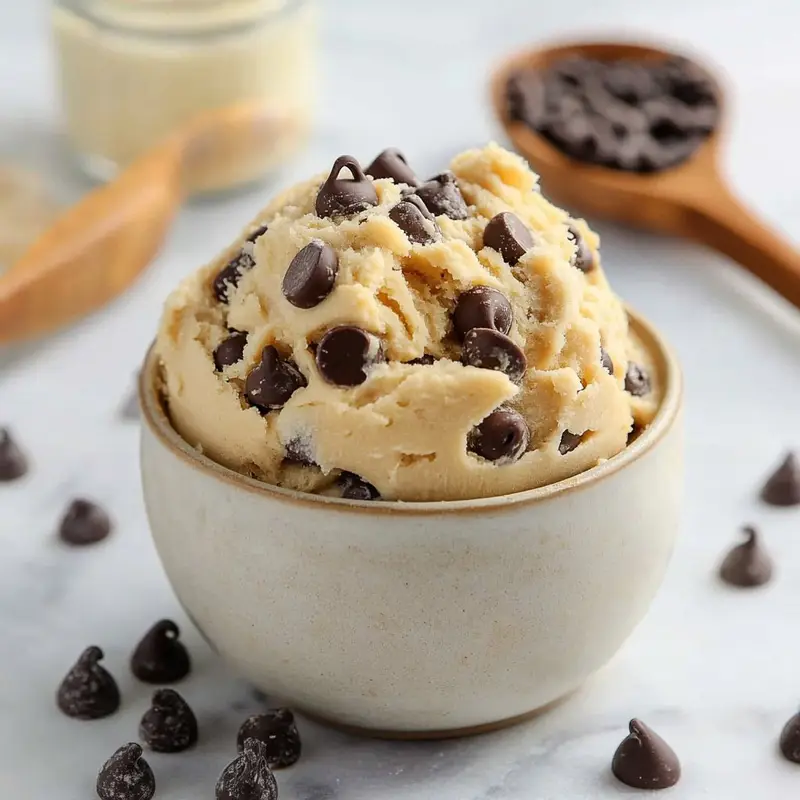
Nutritional Information
Understanding the nutritional composition of edible cookie dough is essential, especially for those mindful of their dietary intake. Typically, a 1/4 cup serving of edible cookie dough provides approximately 200 calories, with most of these calories coming from sugars and fats. The butter in the recipe contributes to the fat content, while the sugars come from both the granulated and brown sugar used. Additionally, there are about 10 grams of fat and 20 grams of sugar per serving. While edible cookie dough is a delightful treat, moderation is key due to its high calorie and sugar content.
For those who want to explore healthier alternatives, consider using almond flour or coconut sugar to reduce the glycemic impact. For more detailed nutritional information and to compare different ingredients, visit this nutritional database. Substituting ingredients like using yogurt instead of milk can also alter the nutritional profile, making it suitable for various dietary preferences.
Wine/Beverage Pairings With Edible Cookie Dough Recipe
Pairing edible cookie dough with the right beverage can enhance the tasting experience. A cold glass of milk is a classic choice, perfectly complementing the sweetness of the dough. For those who enjoy a warm beverage, a cup of freshly brewed coffee or a creamy latte can add a delightful contrast. If you're hosting a gathering, consider serving the cookie dough with a dessert wine such as a late harvest Riesling or a Moscato. These wines have a sweetness that pairs well with the rich flavors of the cookie dough.
For non-alcoholic options, a vanilla milkshake or a flavored iced tea can be refreshing choices, balancing the dessert's richness.
Cooking Tips and Variations
Crafting the perfect edible cookie dough involves a few tips and variations that can elevate your dessert experience. First, ensure your flour is adequately heat-treated to avoid any health risks; this can be done by baking or microwaving the flour. If you're feeling adventurous, try adding other ingredients such as peanut butter, which not only adds flavor but also changes the texture. For a vegan option, substitute the butter with a plant-based alternative and use almond milk instead of regular milk. If you're aiming for a gluten-free version, almond flour or oat flour can be excellent substitutes.
Additionally, playing with the sugar types, like using coconut sugar or honey, can bring a different level of sweetness and flavor. Remember, edible cookie dough is all about personal preference and creativity—experiment with various mix-ins like white chocolate chips, dried fruits, or even chopped nuts. The key is to enjoy the process and make it your own.
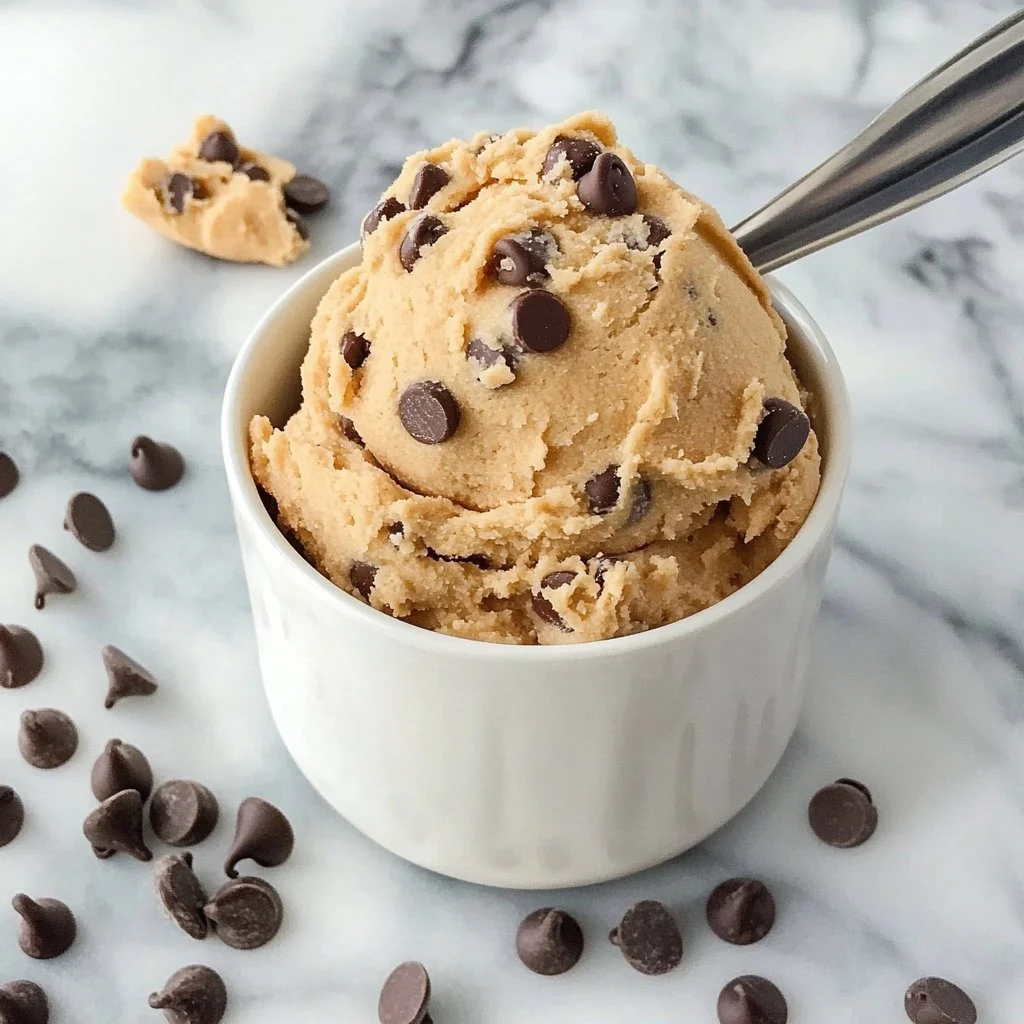
Serving Suggestions
Serving edible cookie dough can be as creative as the recipe itself. For an elegant presentation, consider using small dessert cups or jars to portion out individual servings, garnished with a sprinkle of chocolate chips or a drizzle of caramel sauce. If you’re hosting a party, set up a DIY cookie dough bar with various mix-ins and toppings like mini marshmallows, crushed pretzels, or chopped nuts, allowing guests to customize their servings. Edible cookie dough can also be used as a topping for ice cream, adding a delightful texture and flavor contrast.
Another fun idea is to roll the dough into small balls and dip them in melted chocolate, creating cookie dough truffles. Whether you're serving it as a standalone treat or as part of a dessert platter, the key is to make the experience enjoyable and interactive.
Edible Cookie Dough Recipe Health Benefits
While edible cookie dough is a delicious treat, it's important to consider its health implications. The primary ingredients—sugar, butter, and flour—are high in calories and can contribute to an increased intake of fats and sugars if consumed in large quantities. However, you can make healthier choices by modifying the recipe. For instance, using whole grain flours can add fiber to your diet, while replacing some of the sugar with natural sweeteners like honey or maple syrup can reduce the overall sugar content. Additionally, opting for dark chocolate chips instead of milk chocolate can offer antioxidants and a richer flavor.
Consuming cookie dough in moderation as part of a balanced diet allows you to enjoy this treat without compromising your health goals. Remember, balancing indulgence with mindful eating is the key to maintaining a healthy lifestyle.
FAQs About Edible Cookie Dough Recipe
Is it safe to eat raw cookie dough?
Yes, this edible cookie dough recipe is safe as it uses heat-treated flour and no eggs to eliminate the risk of salmonella and E. coli.
Can I bake this edible cookie dough?
This recipe is designed for eating raw. While you can try baking it, the texture and taste may differ from traditional cookies.
How should I store edible cookie dough?
Store any leftover cookie dough in an airtight container in the refrigerator for up to a week, or freeze it for up to three months.
Edible cookie dough offers a delightful way to enjoy the nostalgic taste of cookie batter without any safety concerns. This recipe provides a safe alternative to traditional cookie dough, allowing everyone to indulge in a sweet treat. With various ways to customize and serve it, the possibilities are endless. Whether you're looking for a quick, satisfying dessert or a fun activity to do with loved ones, making edible cookie dough is sure to be a hit. Remember to enjoy responsibly and consider the modifications for a healthier twist. We hope this edible cookie dough recipe becomes a favorite in your home, bringing joy and satisfaction with every spoonful.

